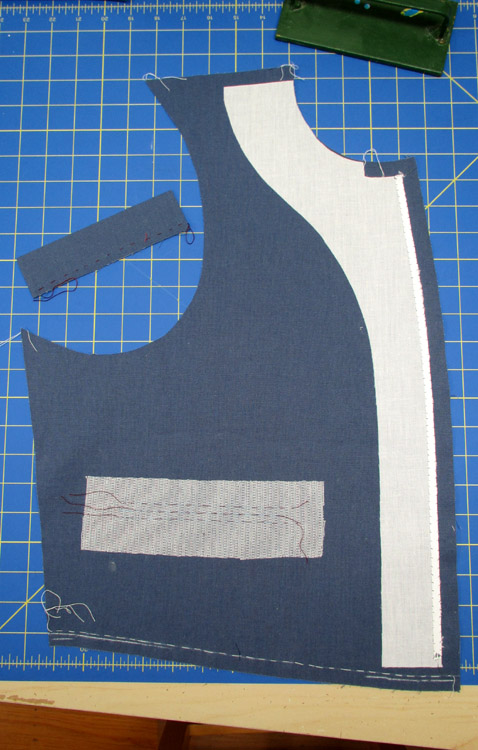
January – September 2012
A GBACG summer picnic was an excellent opportunity for me to delve into 18thC menswear. I made Aaron some basic, warm weather pieces using all Kannik’s Korner patterns.
Trousers and Braces: “Man’s Trousers High-Waisted 1790-1810”
The fabric is a woven stripe, a hemp-cotton blend canvas from William Booth Draper. The buttons were found locally, and are apparently made out of some sort of nut. I ordered bone buttons for the braces from Burnley & Trowbridge. I still can’t believe that I have to make my own braces, but they are very simple. The pants are lined in cotton broadcloth.
The pattern went together beautifully. But the instructions describe an authentic, handsewn method of assembly only. Granted, I love that the makers include this level of detail. It is a wonderful thing. But if you want to use modern construction methods, you will need to be a bit savvy to work with their patterns. I’ve never made a pair of drop front pants before, and certainly wouldn’t risk handsewing a new pattern that I hadn’t already tested. I always find fitting or sewing points that can be improved upon for version 1.1. So I went through a process of rewriting all the instructions for machine assembly. It was fun: like piecing together a puzzle. I’m actually very proud of my little manual and next time I make these it will be totally straight-forward. If you would like to see my assembly steps for the Kannik’s Korner Trousers, here is a pdf for the machine notes, and a picture for Diagram F.
When it came to cutting this fabric I had a nice surprise. I’ve never sewn a woven stripe and had no idea that cutting it was so easy. I guess I just assumed it would be like cutting plaid. But the grain line is literally marked out, at 1/8 inch intervals!
The bearer/binder slash is fused with tricot, as are the binders themselves. Little squares of interfacing were added everywhere else that supports buttons or buttonholes. This fabric was easy to sew. I extended the waistband front so it laps under as a facing, to avoid bulk in that area. The pants are machine topstiched.


Waistcoat: “Man’s Waistcoats 1790-1815”
The waistcoat is a cotton-linen blend, lined with oatmeal portofino linen. Translating the pattern’s hand sewn instructions into machine assembly wasn’t too bad. There’s nothing particularly unusual about the vest (as opposed to the pants). But the fitting was more complicated. I did have to refresh my memory, as it was three years since making the last one. I used my normal speed-tailoring methods.
Neck-handkerchief is a block printed cotton from Silly Sisters. Aaron’s also wearing braces and an 18th century man’s shirt. I’m still shopping for proper shoes.


